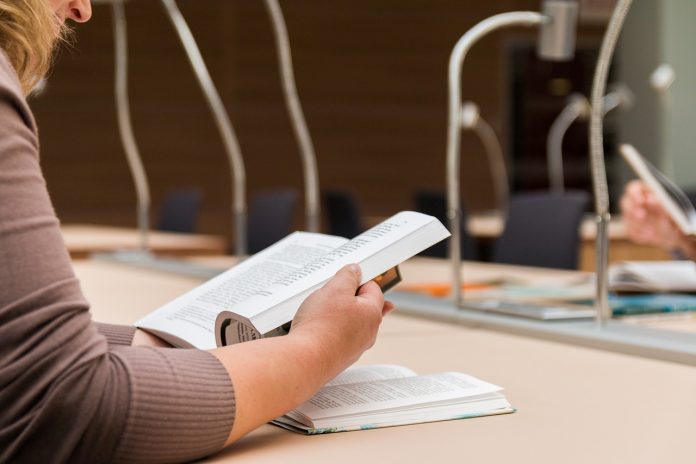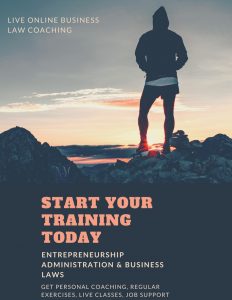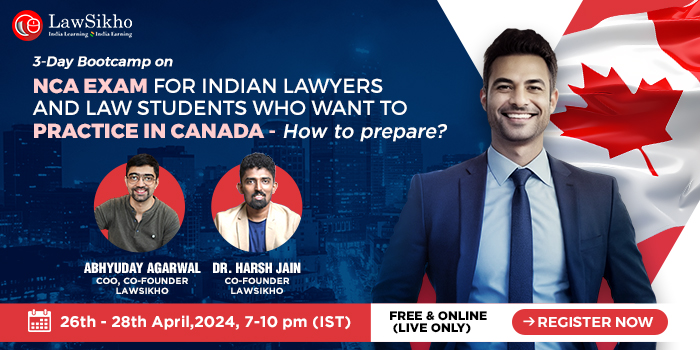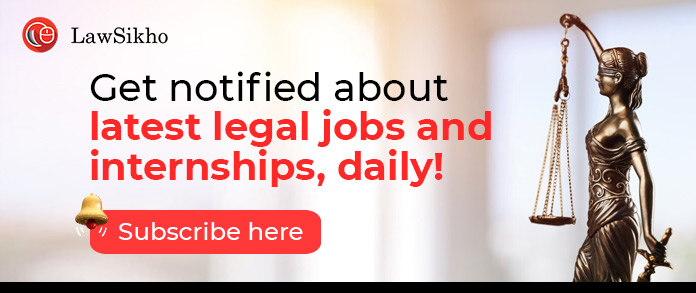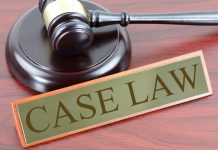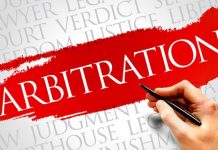AIBE: Mock test 5, Solve the Mock Test to strengthen your Preparation for All India Bar Exam and increase your chances of clearing the paper.
Mock Test
1.) State practice for the formation of the customary rule includes 1. State Action 2. State claims
A.) only 1
B.) only 2
C.) both 1 and 2
D.) neither 1 nor 2
2.) The controller certifying authorities in India must maintain a database of the disclosure records. 1. Certifying authority 2. Cross certifying authority 3. Foreign Certifying authority
A.) 1 and 2
B.) 2 and 3
C.) 3 and 1
D.) 1,2 and 3
3.) Under section 37 of the IT Act, the certifying authority can suspend the digital signature certificate if-: 1.the subscriber is found guilty of malpractice, 2-: the subscriber is involved in cyber-terrorism, 3-: the subscriber request for the same, 4-: in public interest
A.) 1 and 2
B.) 2 and 3
C.) 3 and 4
D.) 4 and 1
4.) In the cases before cyber appellant tribunal, the appellant-
A.) Cannot appear in person without a legal practitioner
B.) cannot authorize a legal practitioner to appear on his behalf
C.) cannot authorize his officer to appear on his behalf
D.) cannot authorize his relatives who is neither his officer nor a legal practitioner to appear on his behalf
5.) In the light of the criminal amendment Act,2013, which of the following is not correct-
A.) the word rape in section 375 of indian penal code,1890 has been replaced with sexual assault.
B.) rape is now gender neutral offence
C.) the amendment has fixed the age for consensual sex as 16 years
D.) all of the above
6.) The offence of stalking upon second or subsequent conviction is-
A.) non cognizable and bailable
B.) cognizable and bailable
C.) cognizable and non bailable
D.) non cognizable and non bailable
7.) In kidnapping the consent of minor is-
A.) wholly immaterial
B.) partly immaterial
C.) wholly material
D.) partly material
8.) Under the provisions of the trade union Act,1926 any person who has attained the age of…. may be a member of a registered trade union subject to any rules of trade union to the contract-
A.) 14 years
B.) 15 years
C.) 18 years
D.) 21 years
9.) Spurious goods under the provisions of the consumer protection Act 1989 imply-
A.) such goods and services which are of poor quality
B.) such goods and services which are claimed to be genuine but they are actually not so
C.) such goods and services which might be stolen in nature
D.) such goods and services which are not usable in nature
10.) Who is liable to pay compensation in cases of death or permanent disablement?
A.) owner of the vehicle
B.) state government
C.) driver
D.) insurance company
11.) Indian Evidence Act applies to-
A.) proceeding before tribunals
B.) proceeding before the arbitrator
C.) judicial proceeding in court
D.) all of the above
12.) Fact in issue means-
A.) fact existence or non existence of which is admitted by the party
B.) fact, existence or non existence of which is disputed by the parties
C.) fact, existence or non existence of which is not disputed by the parties
D.) all of the above
13.) In a bailable offence bail is granted as a matter of right-
A.) by the police officer
B.) by the court
C.) both by the police officer and the court
D.) either 1 or 2
14.) The conciliation proceedings______
A.) can be used as evidence in any judicial proceeding
B.) can be used as evidence only in arbitral prpceeding
C.) cam be used as evidence only on the discretion of the judge or the arbitrator
D.) cannot be used as evidence in any judicial or arbitral proceedings
15.) The serious fraud investigation office
A.) takes up cases suo motto
B.) takes up cases for investigation on the basis of application made by the people concerned
C.) takes up cases for investigation referred to it by central government
D.) all of the above
16.) Directive principles are ________
A.) justifiable as fundamental right
B.) justifiable but not as fundamental right
C.) decorative portions of indian constitution
D.) not justifiable, yet fundamental in the governance of the country
17.) Who has the power to dissolve the lok sabha ?
A.) president
B.) prime minister
C.) speaker of lok sa
D.) council of ministers
18.) An amendment of the contitution can be initiated by introduction of bill for such purpose in
A.) council in states
B.) house of people
C.) either in council of states or house of people
D.) none of the above
19.) The india independence Act,1947 came into force –
A.) 1947-07-18
B.) 1947-08-14
C.) 1947-06-03
D.) 1947-07-26
20.) Sovereignty under constitution belongs to-
A.) the president
B.) the parliament
C.) the people
D.) the executive, judiciary and legislative
21.) Expression socialist in the preamble has been added by taking the view of
A.) Marx and Laski
B.) Marx and Gandhi
C.) Rousseau and Gandhi
D.) Gandhi and Hegel
22.) Quit India movement was declared by the Indian National congress after the failure of the-
A.) Cripps mission
B.) August offer
C.) Wavell plan
D.) none of the above
23.) The first session of the constituent Assembly was held on
A.) 1946-12-09
B.) 1949-11-26
C.) 1947-08-15
D.) 1946-01-26
24.) The indian constitution has borrowed the ideas of preamble from
A.) Italian constitution
B.) Canadian constitution
C.) French constitution
D.) Constitution of USA
25.) The president of the constituent Assembly was
A.) Jawaharlal Nehru
B.) Jai prakash narayan
C.) C. Rajgopalachari
D.) Dr. Rajendra prasad
26.) Which of the following Articles of constitution of india provides freedom as to payment of taxes for promotion of any particular religion
A.) Article 25
B.) Article 27
C.) Article 28
D.) none of the above
27.) The service of a priest can be regulated under
A.) Article 24
B.) Article 23
C.) Article 25(2)
D.) none of the above
28.) The directive principles are aimed at
A.) securing political freedom
B.) securing social and economic freedom by appropriate action
C.) executive supremacy
D.) judiciary supremacy
29.) Fundamental duties are enshrined in
A.) part IV, Article 51
B.) part IV , Article 51A
C.) part IV A , Article 51
D.) part IV A , Article 51 A
30.) The power of declaring any community as schedule caste or schedule tribes is with
A.) Parliament
B.) Home minister
C.) President of India
D.) Chairman of SC/ST Commision
31.) The power of president of India to issue ordinance is a
A.) executive power
B.) legislative power
C.) constituent power
D.) quasi judicial power
32.) The council of ministers are selected by
A.) speaker of lok sabha
B.) prime minister
C.) President
D.) vice president
33.) Representtation of House of People is based on
A.) Area of the state
B.) population
C.) community
D.) literacy rate
34.) Money bill can be
A.) invalid by Rajya sabha
B.) invalid by both the houses
C.) Rajya sabha can reject the money bill
D.) none of the above
35.) The supreme court struck down a part of the preventive detention Act in the case
A.) Gopalan case
B.) Golaknath case
C.) Ramesh Thappar case
D.) Kochunni case
36.) A retired judge of high court cannot
A.) practice in the supreme court
B.) practice in any other High court in India
C.) practice in the High court from where he has retired
D.) none of the above
37.) Indian constitution reserves the residuary power to
A.) union
B.) states
C.) parliament
D.) president
38.) The proclamation of emergency at the first instance can be restricted to
A.) 3 months
B.) 15 days
C.) 6 months
D.) 60 days
39.) Which of the following are included in the concept of “state” under Article 12
A.) Railway board and electricity board
B.) judiciary
C.) university
D.) all of the above
40.) The word procedure established by law in Article 21 is
A.) that due process of law must be followed
B.) A procedure laid down or enacted by a competent authority
C.) the same thing as a due process of law
D.) a law which is reasonable, just and fair
41.) Objection as to non-joinder or mis-joinder of parties under order 1, rule 13 of CPC
A.) can be taken at any stage of the proceedings
B.) should be taken at the earliest possible opportunity or shall be invalid
C.) can be taken in appeal or revision for the first time
D.) either 1or 3
42.) objection as to the place of suing
A.) can only be taken before the court of first instance at the earliest possible opportunity
B.) can also be taken before the appellate court for the first time
C.) can also be taken before the court of revision for the first time
D.) all of the above
43.) On the retirement, removal or death of a next friend, under Order XXXII, rule 10 of CPC, the suit is liable to be
A.) stayed
B.) dismissed
C.) rejected
D.) either 1, 2 or 3
44.) In India which of the following authorities has the power to block websites?
A.) CERT-in
B.) MCIIPC
C.) C-DAY
D.) Ministry of IT
45.) The right to private defence is
A.) available under all circumstances
B.) available when there is time to have recourse to the protection of public authorities
C.) available when there is no time to have recourse of public authorities
D.) all of the above
46.) which of the following can be considered retrenchment under the provision of the Industrial Disputes Act,1947?
A.) termination due to ill health
B.) abondonment of job byan employee
C.) termination on account of reaching the age of superannuation
D.) none of these
47.) Which of the following statement holds true regarding imprisonment under the provision of section 14(3) of the child labour (prohibition and regulation) Act,1986.
A.) it may extend to one year
B.) it may extend to two years.
C.) it may extend to six months
D.) it may extend to one month
48.) Onus to prove reasonable excuse for withdrawl from the society of the other is on
A.) petitioner
B.) respondent
C.) both 1 and 2
D.) either 1 or 2
49.) A proclaimed person whose property has been attached can claim the property or the sale proceeds on appearance
A.) within 6 months of attachment
B.) within 2 years of attachment
C.) within 3 years of attachment
D.) within 1 year of attachment
50.) The question whether a statement was recorded in the course of investigation is a
A.) question of law
B.) question of fact
C.) mixed question of law and fact
D.) question of law or of fact depends on facts and circumstances
51.) Where the police submit a final report under the section 173(2) of the Cr.P.C for dropping of proceeding to a magistrate,the magistrate?
A.) may accept the same
B.) may reject the same
C.) may reject the same and order further investigation
D.) any of the above
52.) The order under section 125 of cr.pc are
A.) summary in nature but finally determine the rights and the obligation of the party
B.) summary in nature and do not finally determine the rights and obligations of the parties which are to be finally determine by the civil court.
C.) substantive in nature and finally determine the rights and obligations of the party.
D.) substantive in nature and are not subject to determination of a right of a party by civil court.
53.) A contingent contract based on the specified uncertain events not happening within a fixed time under section 35
A.) remains valid even if the event does not happen within that fixed time
B.) becomes void at the expiration of the time fixed
C.) becomes void if the happening of that event becomes impossible before the expiry of time fixed
D.) both 1 and 3
54.) which among the following is authorised under the Information Technology Act, 2000 to prescribe the security procedures and practices for the purpose of sections 14 and 15 of the Act.
A.) central government
B.) state government
C.) certifying authority
D.) issuing authority
55.) The essential ingredient of the tort of negligence are-(1) when one owes a duty of care towards the other. (2) when one commits a breach of that duty and. (3) the other persons suffers damages as a consequence thereof. choose correct response for below.
A.) none of them are essential ingredient
B.) only the first is an essential ingredient
C.) all of them are essential ingredient
D.) even if the first is absent the tort of negligence is committed.
56.) vicarious liability includes
A.) liability of the principle for the tort of his agent
B.) liability of the master for the tort of his servant
C.) liability of the partners for each others tort
D.) all of the above
57.) Necessity rule as to admissibility of evidence is applicable when the maker of a statement
A.) is dead or has become incapable of giving evidence
B.) is a person who can be found but his attendance cannot be procured without unreasonable delay or expenses
C.) is a person who cannot be found
D.) all of the above
58.) secondary evidence of a document means
A.) copies of the document
B.) oral account of the contents of the documents
C.) both 1 and 2
D.) none of these
59.) A will required to be proved by calling at least one attesting witness
A.) when it is registered
B.) when it is unregistered
C.) when it is admitted
D.) all of the above
60.) Any person in section 106 of Evidence Act refers to
A.) a party to the suit
B.) a stranger to the suit
C.) a person who is not a party to the suit but interested in the outcome of the suit
D.) all of the above
61.) In a cognizable case under IPC, police have the
A.) authority to arrest a person without warrant
B.) authority to investigate the offence without the permission of the magistrate
C.) both 1 and 2
D.) either 1 or 2
62.) During the investigation a search can be conducted without a warrant by
A.) any police officer
B.) by the investigating officer
C.) both 1 and 2
D.) either 1 or 2
63.) Committal proceedings under section 209 of Cr PC are in the nature of
A.) aid in the investigation
B.) inquiry
C.) trial
D.) either inquiry or trial
64.) which is correct
A.) proposal+acceptance=promise
B.) promise+consideration=agreement
C.) agreement+enforceability=contract
D.) all of the above
65.) communication of acceptance is complete as against the proposer
A.) when it comes to the knowledge of the proposer
B.) when it is put in course of transmission to him so as to be out of the power of the acceptor
C.) when acceptance is communicated to the proposer
D.) all of the above
66.) in case of a general offer, for a valid contract
A.) the acceptor need not have the knowledge of the offer
B.) the acceptor need not have the knowledge of the offer before acceptance by performance
C.) the acceptor may require the knowledge of the offer after the performance of the condition for acceptance
D.) knowledge does not matter so long as the condition is performed with or without knowledge
67.) under the provision of the transfer of property Act, 1882 the unborn person aquires vested interest on transfer for his benefit
A.) upon his birth
B.) 7 days after his birth
C.) 12 days after his birth
D.) no such provision is made
68.) Every transfer of immovable property made with intent to defeat or delay the creditors of the transferor shall be voidable
A.) at the option of the creditor so defeated or delayed
B.) at the option of the debtor
C.) at the option of court
D.) none of the above
69.) where co-judgment debtors are in the position of joint promisors, each is
A.) not jointly are severally liable to the decree-holder
B.) jointly and severally liable to the decree-holder
C.) jointly liable to the decree-holder only
D.) severally liable to the decree-holder only
70.) At sight under section 21 of the Negotiable Instruments Act.1881 means
A.) on presentation
B.) on demand
C.) on coming into vision
D.) none of the above
71.) Section 5 of the Limitation Act applies to-:
A.) suits
B.) execution
C.) election petitions
D.) none of the above
72.) which of the following companies will have to constitute the corporate social responsibility committee under the Companies Act,2013
A.) A company having a net profit of 2.5 crores in a financial year, a net worth of 300 crores and a turnover of rupees 800 crores.
B.) A company having a net profit of 3 crores in a financial year, a net worth of 300 crores and a turnover of rupees 600 crores.
C.) A company having a net profit of 5 crores in a financial year, a net worth of 500 crores and a turnover of rupees 1000 crore and more.
D.) A company having a net profit of 5 crores in a financial year, a net worth of 500 crores and a turnover of rupees 5000 crores or more
73.) A disqualified person/heir
A.) Transmit an interest to his or her own heir
B.) transmits no interest to his or her own heir
C.) may or may not transmit an interest to his or her own heir as per the discretion of the court.
D.) may only transmit an interest to his or her own heir with the consent of the other heir
74.) in cases in which a specific act confers a discretionary power on an authority.
A.) The court can direct the manner in which the power is exercised
B.) the court can direct that the power be exercised in accordance with law
C.) both 1 and 2
D.) neither 1 or 2
75.) The bar council of India rule which stipulated that persons aged 45 years and above could not be enrolled as advocates were struck down by the supreme court in
A.) in E.S. Reddi V. Bar Council of India
B.) Indian council of legal aid and advise V. Bar Council of India.
C.) P. Shanmugam v. Bar Council of India
D.) Legal committee V. Bar Council of India
76.) Which is an incorrect statement
A.) an arbitral award is a contract
B.) an arbitral award must be in writing and signed
C.) an arbitral award included an interim award
D.) none of the above
77.) Which of the following statement holds true for adjudication bodies
A.) Doctrine of stare decisis applies to them
B.) doctrine of res judicata does not apply to them
C.) inherent lack of jurisdiction in a tribunal cannot be cured or created by the act of the parties
D.) none of the above
78.) The supreme court held in v.c Rangadurai V. D.Gopalan an advocate who has been disbarred or suspended from practice must prove after expiration of a reasonable length of time that
A.) he appreciates the insignificance of his dereliction
B.) he has lived a consistent life of poverty and intergrity
C.) he possesses the good character necessary to guarantee uprightness and honour in his professional dealings
D.) the burden is on the applicant to establish that he entitled to resume the privilege of practicing law without restrictions.
79.) The present Arbitration and conciliation Act of 1996 is based on
A.) constitution of india
B.) supreme court of india guidelines
C.) European commercial Arbitration procedure
D.) UNCITRAL
80.) Who among the following is authorised to issued regulation regarding shelf prospectus
A.) SEBI
B.) Central government
C.) company law board
D.) National company law tribunal
81.) Which of the following is not included in the definition of cattle as given under the Indian Forest Act,1927
A.) Rams
B.) kids
C.) kitten
D.) none of these
82.) The provision of the arbitration and conciliation Act of 1996 have to be interpreted being influenced by the principle underlying the 1940 Act. this observation was laid down in
A.) M.M.T.C ltd. v. Sterlite industries (India) ltd.
B.) Sunderam finance ltd. v. N.E.P.C ltd
C.) olympus superstructure pvt. ltd. v. meera vijya
D.) orma impex pvt. Ltd. v. nissan pvt. ltd.
83.) which of the following services cannot be provided to the company by an author appointed under the provisions of the companies Act,2013
A.) internal audit
B.) actuarial services
C.) managerial services
D.) all of the above
84.) Under the wild life (protection) Act,1972 any person who teases an animal in a zoo maybe punished
A.) with fine which may extends to 5000
B.) with imprisonment which may extend upto 1 year
C.) both 1 and 2
D.) neither 1 or 2
85.) The entry on forests and protection of wild animals and bird was moved from …to the… by the 42nd amendment to the constitution of the India
A.) centre list to state list
B.) centre list to the concurrent list
C.) state list to the concurrent list
D.) state list to union list
86.) Droit des gens (laws of nations)1758 was written by
A.) Comelius van bynkershoek
B.) Emerich de vattel
C.) Richard zouch
D.) Jean bodin
87.) To establish section 34
A.) common interest must be proved but not overt act is required to be proved
B.) common intention and overt act both are required to be proved
C.) common intention needs not be proved but only overt act is required to be proved
D.) all of the above
88.) Under the provision of the industrial disputes Act,1947 the appropriate government can by order in writing
A.) refer the dispute to a board for promoting a settlement of the dispute
B.) refer any matter appearing to be relevant to the dispute to the dispute to the dispute to a court for inquiry
C.) both 1 and 2
D.) neither 1 or 2
89.) which of the following statements is true for loss of confidence by management in the workman ?
A.) even when dismissal or discharge is held to be wrongful, the court may not order reinstatement if the employer is able to establish that the workman held a position of trust and there was a loss of confidence.
B.) loss of confidence may also be a ground for discharge simpliciter of the work man
C.) both 1 and 2
D.) neither 1 or 2
90.) Under the provision of the Consumer Protection Act, 1986, the period of limitation for filing a complaint before the national commision is
A.) 1 year from the date on which causes of action has arisen
B.) 2 year from the date on which causes of action has arisen
C.) 3 year from the date on which causes of action has arisen
D.) 4 year from the date on which causes of action has arisen
91.) Grievous hurt under the motor vehicle Act,1988 means
A.) Grievous hurt as defined in ipc
B.) Grievous hurt as defined in medical laws
C.) Grievous hurt as detected by medical practitioner
D.) none of the above
92.) A retracted confession
A.) can be solely made the basis of conviction
B.) cannot be solely made the basis of conviction
C.) cannot be solely made the basis of conviction unless the same is corroborated
D.) both a and c are correct
93.) A confession to be inadmissible under section 25 of the act
A.) must relate to the same crime for which the offender is charged
B.) may relate to the same crime for which the offender is charged
C.) must relate to another crime
D.) none of the above
94.) An unjustified and unexplained long delay on the part of the investigation officer in recording the statement of a material witness would render the evidence of such witness
A.) unreliable
B.) inadmissible
C.) inadmissible and unreliable
D.) none of the above
95.) Recording of pre summoning evidence may be dispensed with under section 200 of Cr.p c
A.) if the complaint is supported by the affidavit of the complainant
B.) if the complaint is made in writing by a public servant in the discharge of his official duties
C.) both 1 and 2
D.) only 1 is correct
96.) contract without consideration made in writing and registered and made on account of natural love and affection is
A.) void
B.) reasonable
C.) valid
D.) unenforceable
97.) Under the transfer of property Act,1882
A.) the salary of a public officer can be transferred
B.) the salary of a public officer cannot be transferred
C.) public officer can be transferred
D.) none of the above
98.) where a debt is transferred for the purpose of securing an existing or future debt, the debt so transferred, if received by the transferor or recovered by the transferee is applicable first,in payment of the cost of such recovery . this is the provision of
A.) mortgaged debt
B.) gift
C.) actionable claim
D.) lease
99.) A suit is under section 6 of the specific relief Act can be brought by
A.) trespasser
B.) a tenant holding over
C.) servant
D.) manager
100.) Injunction cannot be granted in a suit
A.) in which the specific performance cannot enforced
B.) for breach of negative contract to enforce specific contract
C.) for declaration where the plaintiff is in possession
D.) neither 1, nor 2, nor 3
Answers
1.) C 2.) D 3.) C 4.) D 5.) D 6.) C 7.) A 8.) B 9.) B 10.) A 11.) C 12.) B 13.) C 14.) D 15.) C 16.) D 17.) A 18.) C 19.) A 20.) C 21.) B 22.) A 23.) A 24.) D 25.) D 26.) B 27.) C 28.) B 29.) D 30.) A 31.) B 32.) B 33.) B 34.) D 35.) A 36.) C 37.) C 38.) C 39.) D 40.) A 41.) B 42.) D 43.) A 44.) D 45.) C 46.) D 47.) D 48.) A 49.) B 50.) B 51.) D 52.) B 53.) D 54.) A 55.) D 56.) D 57.) D 58.) C 59.) A 60.) A 61.) C 62.) C 63.) B 64.) D 65.) B 66.) B 67.) A 68.) A 69.) B 70.) B 71.) A 72.) C 73.) C 74.) B 75.) C 76.) D 77.) C 78.) C 79.) D 80.) A 81.) C 82.) B 83.) A 84.) D 85.) C 86.) B 87.) B 88.) C 89.) C 90.) B 91.) A 92.) C 93.) D 94.) D 95.) C 96.) C 97.) B 98.) A 99.) B 100.) A
To solve another mock test for AIBE preparation, please Click Here.
Students of Lawsikho courses regularly produce writing assignments and work on practical exercises as a part of their coursework and develop themselves in real-life practical skill.
https://t.me/joinchat/J_0YrBa4IBSHdpuTfQO_sA
Follow us on Instagram and subscribe to our YouTube channel for more amazing legal content.



